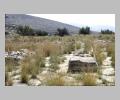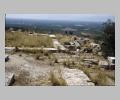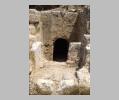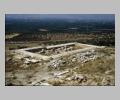| Summary: | The main sanctuary to Hera in the Argive territory. |
| Type: | Sanctuary |
| Region: | Argolid |
Periods:
Geometric
Archaic
Classical
Hellenistic
Roman
Physical:
The Heraion is located approximately equidistant from Argos and Mycenae, in an area referred to by Pausanias as Prosymna. The sanctuary occupies 3 artificial terraces below Mt. Euboea and has a commanding view of the Argive plain. The upper terrace, supported by a retaining wall of possible late Geometric date, is a level paved area occupied by the Old Temple and an altar. The later, middle terrace supports the New Temple, where a chryselephantine statue of Hera by Polykleitos was housed. Other structures located on this terrace included one of the earliest examples of a building with a peristyle court, which may have served as a banquet hall. On the lowest terrace is a stoa and an Archaic step-like retaining wall. To the W are Roman baths and palaestra.
Description:
Although tradition states that Agamemnon was elected at the Heraion to lead the Trojan expedition, the earliest finds at the cult area date to the Geometric period. The sanctuary grew and expended during the Archaic and Classical period and most of the remains (with the exception of the Roman baths and palaestra) date to the 7th through 5th centuries B.C. The sanctuary continued in importance through the Roman period.
Exploration:
Discovered 1831 by T. Gordon. Minor excavations: Gordon (1836), Rangabé and Bursian (1854), Schliemann (1874), Stamatakis (1878) and Caskey and Amandry 1949. Major excavations: American School of Classical Studies; C. Waldstein 1892-1895, C. Blegen 1925-1928.
Sources Used:
Other Bibliography:





